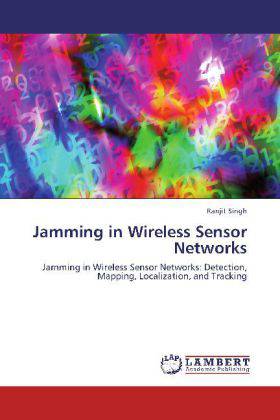
- Afhalen na 1 uur in een winkel met voorraad
- Gratis thuislevering in België vanaf € 30
- Ruim aanbod met 7 miljoen producten
- Afhalen na 1 uur in een winkel met voorraad
- Gratis thuislevering in België vanaf € 30
- Ruim aanbod met 7 miljoen producten
Zoeken
Jamming in Wireless Sensor Networks
Jamming in Wireless Sensor Networks: Detection, Mapping, Localization, and Tracking
Ranjit Singh
Paperback | Engels
€ 77,95
+ 155 punten
Omschrijving
Wireless Sensor Networks are extremely vulnerable to jamming attacks as they are abjectly poor in resources leading to near- denial of counter-jamming options. This book is about a research-work aimed at utilizing the immense synergy of these networks to strengthen them against jamming defensively and offensively. The aim has been achieved by solving the problems of: 1) jamming detection, 2) jammed area mapping, 3) jammer localization, and 2) jammer tracking.The work on jamming attack detection for WSNs is novel as it tackles the problem through fuzzy inference system augmented with 2-Means clustering of node-neighborhood system of jamming confirmation.Jammed area mapping is done by drawing desired number of zones through hull tracing of jammed nodes as per their pre-calculated jamming indices.Two accurate and versatile methods for jammer localization are formulated the spoke and weighted centroid method with jamming-index as weight. The jammer tracking system, an earnest beginning in the field of jammer tracking in wireless sensor networks, uses a plethora of techniques to track the jammer.
Specificaties
Betrokkenen
- Auteur(s):
- Uitgeverij:
Inhoud
- Aantal bladzijden:
- 224
- Taal:
- Engels
Eigenschappen
- Productcode (EAN):
- 9783659256431
- Uitvoering:
- Paperback
- Afmetingen:
- 150 mm x 220 mm

Alleen bij Standaard Boekhandel
+ 155 punten op je klantenkaart van Standaard Boekhandel
Beoordelingen
We publiceren alleen reviews die voldoen aan de voorwaarden voor reviews. Bekijk onze voorwaarden voor reviews.











